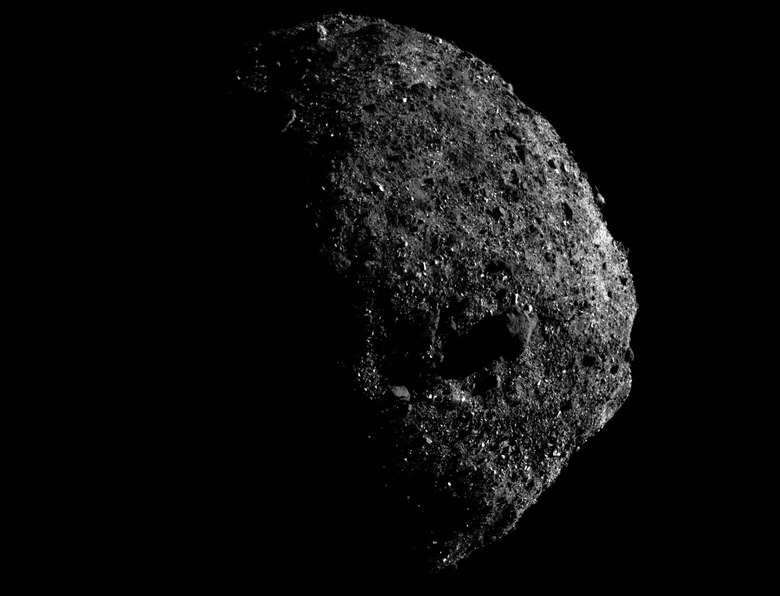NASA's Probe Spots Asteroid Spewing Chunks Of Itself Into Space
NASA started off the year strong with big news from its OSIRIS-REx asteroid probe. In early January, NASA celebrated the successful insertion of the probe in an orbit around the space rock known as Bennu. The year since that milestone has been filled with interesting observations and a whole lot of lovely photos, but one of the most puzzling features of Bennu may finally have an explanation.
It wasn't long after OSIRIS-REx began returning observations of Bennu that researchers spotted something bizarre. The asteroid seemed to be flinging pieces of itself around, with particles launching from the asteroid's surface and eventually settling back down on new areas of the rock.
Before NASA's spacecraft could study the phenomenon, the science team had to ensure that the particles weren't a danger to the probe itself. There would be nothing worse than flying all the way to an asteroid only to have it chuck rocks at the high-tech hardware and destroy it. After the initial investigation, the team determined the particles wouldn't harm OSIRIS-REx, and the researchers set about determining why the asteroid was juggling chunks of itself as it cruises through space.
"Among Bennu's many surprises, the particle ejections sparked our curiosity, and we've spent the last several months investigating this mystery," principal investigator Dante Lauretta explains. "This is a great opportunity to expand our knowledge of how asteroids behave."
The team came up with a number of possible explanations, including impacts from smaller space rocks slamming into the asteroid. Another possible explanation is that the surface of Bennu may be more active than originally thought, with regular heating from the Sun causing fractures that send pieces of the asteroid flying.
NASA's spacecraft is on a mission to retrieve asteroid samples and then return to Earth. It wasn't sent to Bennu to investigate this strange phenomenon and doesn't have instruments built for this purpose. That makes it difficult for scientists to pin down a definitive cause, but the research is nonetheless interesting.
